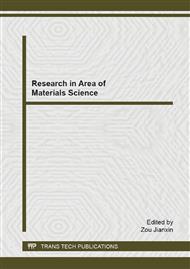p.103
p.109
p.114
p.120
p.125
p.132
p.136
p.143
p.147
Erosion-Corrosion of Carbon Steel and Alloys in Ammonium Hydrosulfide Solutions
Abstract:
The rotary experiment apparatus was built to study the erosion-corrosionresistance of carbon steel, 15CrMo steel, duplex stainless steel 2205, nickel based alloy 825 and stainless steel 316L which are commonly used in the sour water environment of refinery. Based on the electrochemical test, the carbon steel and alloys corrosion rates in different ammonium hydrosulfide concentration, fluid velocity and temperature were obtained. The corrosion products film morphology was analyzed by scanning electron microscope (SEM) to find the reasons for corrosion rates difference of carbon steel and alloys. The results showed that the corrosion rates of carbon steel and alloys were increasing with fluid velocity, ammonium hydrosulfide concentration and temperature increase, when the velocity exceeds 6 m/s the corrosion rates essentially unchanged. The maximum corrosion rate of carbon steel at 60 °C and 10 wt% ammonium hydrosulfide concentration was as high as 6.5 mm/year, while the nickel based alloys 825 and stainless steel 316L were less than 1.5 mm/year. The corrosion product films of carbon steel and 15CrMo steel was loose and cracking which can easy to fall off from the substrate when subjected to fluid impact and the corrosive media can easily penetrate into the bottom of corrosion product and continue to corrode substrate. However, the corrosion film of nickel based alloys 825 and stainless steel 316L was dense and tightly bonded to substrate making it has a good corrosion resistance.
Info:
Periodical:
Pages:
125-131
Citation:
Online since:
April 2015
Authors:
Keywords:
Price:
Сopyright:
© 2015 Trans Tech Publications Ltd. All Rights Reserved
Share:
Citation:


